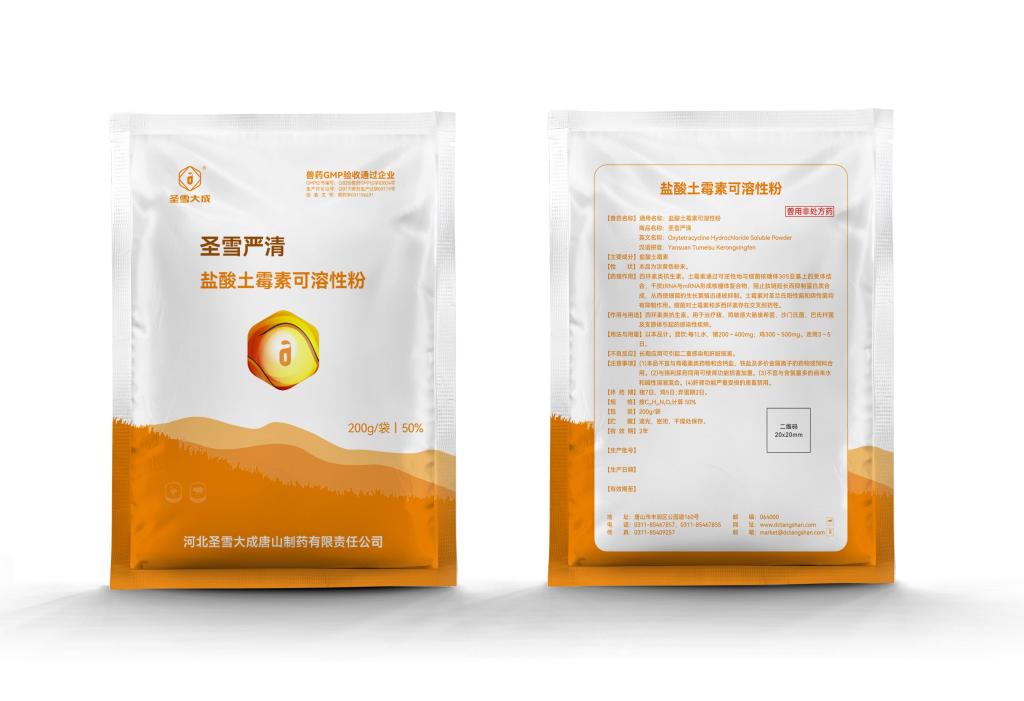Tel:+8618231198596

News
 CONTACT
CONTACT
 CONTACT
CONTACT
- Linkman:Linda Yao
- Tel: +8618231198596
- Email:linda.yao@dcpharma.cn
- Linkman:CHARLES.WANG
- Department:Overseas
- Tel: 0086 0311-85537378 0086 0311-85539701
News
Residue testing methods in food products become a focal point in Oxytetracycline-related dialogues.
TIME:2023-12-21
1. Introduction: Balancing Animal Health and Food Safety:
The use of oxytetracycline in veterinary medicine has been instrumental in maintaining animal health. However, residues of this antibiotic in food products raise concerns about potential human health impacts. Achieving a balance between ensuring animal welfare and guaranteeing food safety requires robust residue testing methods and ongoing dialogues among stakeholders.
2. Oxytetracycline Residues: A Concern in Food Safety:
Oxytetracycline residues can find their way into food products through the consumption of treated animal products or environmental contamination. As a result, regulatory authorities, food producers, and consumers alike are increasingly focused on implementing effective residue testing methods to assess and manage the levels of oxytetracycline in various food items.
3. Detection Challenges: Analyzing Oxytetracycline Residues with Precision:
The detection of oxytetracycline residues presents challenges due to factors such as low concentrations, matrix complexities, and the potential for residues to undergo chemical changes. Analytical chemists and researchers continually refine testing methods to achieve higher sensitivity and accuracy, utilizing techniques such as liquid chromatography, mass spectrometry, and immunoassays.
4. Matrix Effects: Navigating the Complexities of Food Matrices:
Food matrices, ranging from meat and dairy to fruits and vegetables, introduce complexities in residue testing. The matrix effects can influence the performance of testing methods, requiring scientists to adapt and validate approaches that ensure reliable results across diverse food types. The ongoing dialogue involves addressing matrix effects and harmonizing methods for different matrices.
5. Regulatory Standards and Harmonization: Towards Global Consistency:
The regulatory landscape governing oxytetracycline residues is multifaceted, with variations in standards and tolerances across regions. Achieving global consistency in residue testing methods is a focal point in oxytetracycline-related dialogues. Harmonization efforts involve collaboration among regulatory bodies to establish unified standards that ensure food safety on an international scale.
6. Risk Assessment: Balancing Exposure and Tolerance Levels:
Risk assessment plays a pivotal role in determining acceptable levels of oxytetracycline residues in food products. Scientists engage in ongoing dialogues to refine risk assessment models, considering factors such as exposure levels, population demographics, and potential health impacts. The goal is to establish tolerances that safeguard public health while acknowledging the realities of agricultural practices.
7. Emerging Technologies: Innovations in Residue Testing:
Advancements in technology contribute to innovations in residue testing methods. Emerging techniques, including biosensors, molecular imprinting, and hyperspectral imaging, show promise in enhancing the efficiency and speed of oxytetracycline residue detection. Ongoing dialogues explore the integration of these technologies into routine testing practices.
8. Challenges in Cross-Contamination Prevention: From Farm to Table:
Preventing cross-contamination throughout the food production chain is a critical aspect of ensuring the reliability of residue testing results. Farmers, processors, and food handlers engage in dialogues to implement best practices that minimize the risk of cross-contamination, from on-farm antibiotic administration to processing and distribution.
9. Consumer Awareness and Education: Building Trust in Food Safety:
In oxytetracycline-related dialogues, consumer awareness and education are key components. Transparent communication about residue testing methods, regulatory standards, and risk assessment findings builds trust and empowers consumers to make informed choices. Farmers, producers, and regulatory agencies play a role in disseminating accurate information to the public.
10. Sustainable Agriculture and Residue Management: A Holistic Approach:
Sustainable agriculture involves a holistic approach to farming that considers environmental, economic, and social factors. Dialogues in the realm of residue testing extend to discussions about sustainable farming practices, emphasizing responsible antibiotic use, waste management, and the integration of alternative therapies to reduce reliance on antibiotics like oxytetracycline.
11. International Collaboration: Sharing Best Practices and Insights:
Oxytetracycline-related dialogues extend beyond national borders, with international collaboration playing a crucial role. Sharing best practices, research findings, and insights enhances the collective understanding of residue testing methods. Collaborative efforts facilitate the development of standardized approaches that benefit global food safety.
12. Future Perspectives: Ongoing Dialogues for Continuous Improvement:
As scientific knowledge evolves and technological innovations continue to emerge, ongoing dialogues surrounding oxytetracycline residues in food products will persist. Future perspectives involve continuous improvement in testing methods, risk assessment models, and international collaboration to ensure the safety and quality of food products.
13. Conclusion: Dialogue as a Catalyst for Food Safety Assurance:
In conclusion, the complexities surrounding oxytetracycline residues in food products necessitate ongoing dialogues among stakeholders. From refining detection methods to harmonizing regulatory standards and promoting consumer awareness, these dialogues serve as catalysts for continuous improvement in ensuring food safety. By fostering collaboration and knowledge exchange, the agricultural and scientific communities contribute to a future where the benefits of oxytetracycline in animal health can be realized without compromising the safety of the food supply.
- Tel:+8618231198596
- Whatsapp:18231198596
- Chat With Skype







